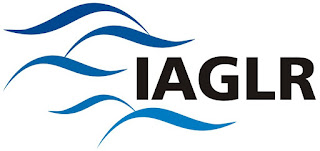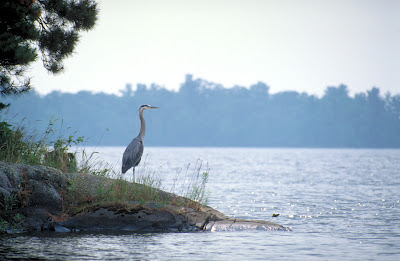Dozens of researchers and government representatives will come together next month to present the latest research on Lake Michigan’s ever-changing food web during the Conference on Great Lakes Research. The session, held June 3-4, will be chaired by IISG’s Tomas Hook, along with David Bunnell from the U.S. Geological Survey and Hank Vanderploeg from NOAA.
Presentations will discuss a range of issues that help determine just what eats what in the lake. Several will focus on what happens to the diet of native species when invaders like quagga mussels, round goby, spiny water flea deplete food resources. Others will introduce how shifts in phosphorus and other nutrient levels may be behind recent changes at the bottom of the food web and compare the eating habits of forage fish over the last two decades.
The session is a part of ongoing regional efforts to improve understanding of the complicated relationships between the many different microbes, plants, and animals that call Lake Michigan home. Since 2010, IISG and other partners in the Great Lakes Regional Research Information Network have funded several studies on the links that form the food web.
“While researchers have been studying the Lake Michigan food-web for several decades, many of the interactions remain poorly described,” said Tomas. “And we are learning that there are very important regional differences in food web structures across Lake Michigan.”
In addition to serving as co-chair, Tomas will join researchers from across the Great Lakes to present the findings of three studies slated for the session. For a description of these and other presentations, visit the session schedule and click on the presentation titles.
The International Association for Great Lakes Research’s (IAGLR) 56th Annual Conference on Great Lakes Research is sponsored by IISG and Purdue University. To view the entire program, visit the conference website.
The term “food web” is used to describe the intricate relationships between the many different plants, animals, and organisms that can exist in small or large areas. Understanding food webs in specific environmental locations, such as in one or more of the Great Lakes, can help researchers and communities better respond to changes in those delicate systems. Invasive species are just one example of a potential influence that can drastically alter a food web and have substantial impacts on native environments.
On April 3 and 4, 2012, Illinois-Indiana Sea Grant (IISG) and GLRRIN Lake Michigan
partners from Wisconsin Sea Grant(WISG), Michigan Sea Grant, the NOAA Great Lakes Environmental Research Laboratory, the US EPA Great Lakes National Program Office, and the USGS Great Lakes Science Center hosted a research meeting in Ann Arbor, MI. Approximately 60 researchers from federal, state, university, tribal, and non-profit organizations gathered to discuss their current understanding of food webs in Lake Michigan. Food web structure and function can be affected by many variables, including changes in water temperature, water quality, and/or habitat loss. Recent aquatic invaders, including zebra and quagga mussels, have drastically altered the Lake Michigan ecosystem, leaving researchers with new questions about what variables most affect commercial and recreational fishing, bird populations, non-toxic algal blooms, and overall quality of life for humans and animals.
GLRRIN Lake Michigan hosted a similar meeting in 2008, which helped launch the 2010 Lake Michigan Intensive Monitoring Field Year. Findings presented during the 2012 meeting highlight the inherent variability of Lake Michigan, especially in areas that are less than 20 m deep. Researchers also stressed the need to further understand how the lowest levels of the food chain, such as microbes and nutrient cycling, operate. Understanding these basic levels will help create better tools for decision makers like fishery managers or watershed planning committees. A full report on the meeting presentations and discussions will be made available through the GLRRIN Lake Michigan and IISG websites.



